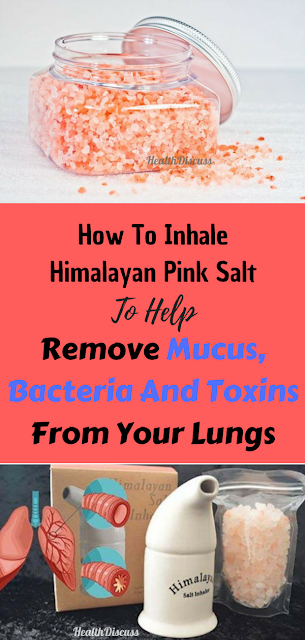Himalayan salt is the purest salt on earth which is protected from the modern-day pollution. Its hues of pink and white indicate that it has rich mineral and iron content. As a matter of fact, this naturally-formed salt is made up of 85.62 percent sodium chloride and 14.38 percent trace minerals like potassium, bicarbonate, bromide, borate, fluoride, magnesium, calcium, strontium, and sulphate.
Thanks to these minerals, this salt has the ability to:
Salt Therapy Isn’t New
While salt therapy is quite new to the United States, salt rooms have been used in Europe for over 200 years. Long ago, people with respiratory-related problems used to visit salt mines for therapeutic purposes, and even ancient Greeks used salt therapy to treat those conditions.
In the U.S, salt therapy is becoming more popular and valued thanks to the introduction of salt rooms in spas. This salt in particular is known for its anti-microbial, anti-fungal, and antibacterial properties.
So, as people still visit salt mines to address their respiratory problems like congestion, hay fever, allergies, and asthma, others overcrowd the salt rooms in cities like Orlando, London, and New York.
Therefore, you don’t need to travel far or visit a salt mine in order to enjoy the benefits of Himalayan salt. As a matter of fact, adding this salt to your daily diet or routine provides the same effects! These days, Himalayan salt is available in many different forms, including coarse salt for bath, lamps, slabs, blocks, rock and ground salt for cooking, and you can even make a Sole.
Benefits of Salt Inhalers
Salt inhalers found these days on the market combine the best features of old-world and modern technology. The salt rocks are located at the bottom of the inhaler, and once you inhale, the moisture in the air takes in the salt compounds into the lungs.
Consequently, this helps reduce inflammation in the lungs and thus alleviate conditions like allergies, congestion, hay fever, sinus congestion, and asthma. The best part is that this technique is completely safe and isn’t associated with any adverse side effects.
Given that the ions are tiny, they pass the nasal and end up directly into the lungs. Then, the lungs absorb them and send them to the bloodstream. Consequently, this helps reduce both inflammation and pain associated with conditions like asthma, pneumonia, or bronchitis.
Thanks to these minerals, this salt has the ability to:
- Prevent goiters
- Prevent muscle cramping
- Improve circulation
- Create an electrolyte balance
- Increases hydration
- Regulate water content both inside and outside of cells
- Balance pH (alkaline/acidity) and help to reduce acid reflux
- Dissolve and eliminate sediment to remove toxins
- Strengthen bones
- Lower blood pressure
- Help the intestines absorb nutrients
- Detoxify the body from heavy metals
- Support libido
- Reduce the signs of aging
Salt Therapy Isn’t New
While salt therapy is quite new to the United States, salt rooms have been used in Europe for over 200 years. Long ago, people with respiratory-related problems used to visit salt mines for therapeutic purposes, and even ancient Greeks used salt therapy to treat those conditions.
In the U.S, salt therapy is becoming more popular and valued thanks to the introduction of salt rooms in spas. This salt in particular is known for its anti-microbial, anti-fungal, and antibacterial properties.
So, as people still visit salt mines to address their respiratory problems like congestion, hay fever, allergies, and asthma, others overcrowd the salt rooms in cities like Orlando, London, and New York.
Therefore, you don’t need to travel far or visit a salt mine in order to enjoy the benefits of Himalayan salt. As a matter of fact, adding this salt to your daily diet or routine provides the same effects! These days, Himalayan salt is available in many different forms, including coarse salt for bath, lamps, slabs, blocks, rock and ground salt for cooking, and you can even make a Sole.
Benefits of Salt Inhalers
Salt inhalers found these days on the market combine the best features of old-world and modern technology. The salt rocks are located at the bottom of the inhaler, and once you inhale, the moisture in the air takes in the salt compounds into the lungs.
Consequently, this helps reduce inflammation in the lungs and thus alleviate conditions like allergies, congestion, hay fever, sinus congestion, and asthma. The best part is that this technique is completely safe and isn’t associated with any adverse side effects.
- Salt is a natural expectorant which helps reduce excess mucous
- Reducing mucus eliminates both night time coughing and post nasal drip, allowing you to sleep better
- Himalayan salt is packed with 84 natural elements and minerals
- Salt is known for its powerful antibacterial, anti-fungal and anti-microbial properties
- Himalayan salt inhalers can significantly reduce irritation and inflammation caused by pollutants and smoke
- Salt inhalation therapy can reduce irritation and swelling of nasal passages
How to Use a Salt Inhaler
- Put the Himalayan rock in the inhaler, according to the package instructions
- Place the inhaler mouthpiece in the mouth
- Inhale through the mouth and exhale through the nose
- Since the inhaler is designed for dry therapy only, don’t add water
- Inhaling with long, slow and deep breaths brings the salt ions to the lungs
Given that the ions are tiny, they pass the nasal and end up directly into the lungs. Then, the lungs absorb them and send them to the bloodstream. Consequently, this helps reduce both inflammation and pain associated with conditions like asthma, pneumonia, or bronchitis.

